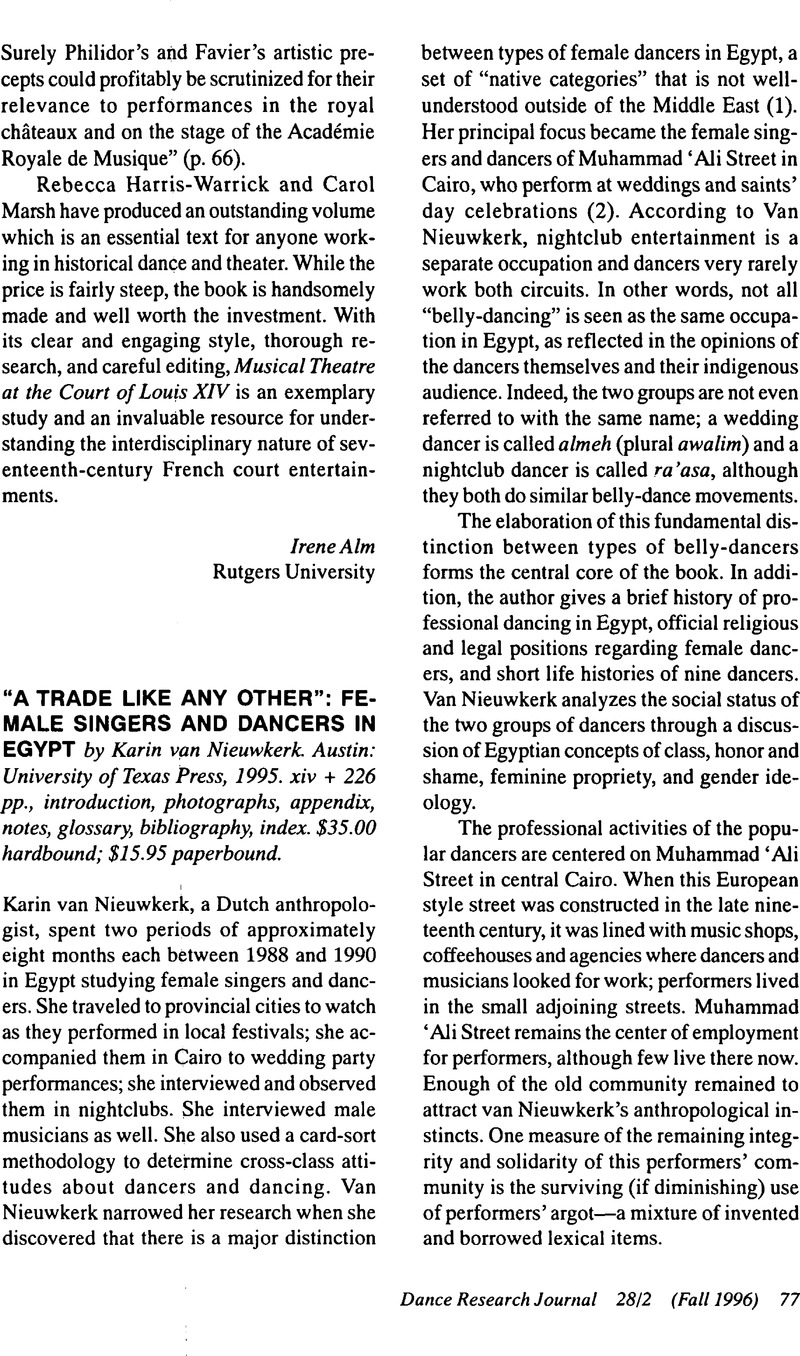No CrossRef data available.
Published online by Cambridge University Press: 22 July 2014

1. This anthropological term is analogous to “native speaker” and in no way intends “native” as a pejorative label.
2. Singers and dancers are grouped together because in many cases a woman entertainer performs both song and dance. This was more common from the 1800s to about 1970.
3. Middle East scholars will recognize such authors as Ahmed, Leila, Women and Gender in Islam (New Haven: Yale Univeristy Press, 1992)Google Scholar; Sabbah, Fatna, Woman in the Muslim Unconscious (New York: Pergamon Press, 1984)Google Scholar; Tucker, Judith E., Women in Nineteenth-Century Egypt (Cairo: American University in Cairo Press, 1986)Google Scholar; El-Messiri, Sawsan, Ibn al-Balad: A Concept of Egyptian Identity (Leiden: E. J. Brill, 1978).Google Scholar
4. These dancers are from the United States, the United Kingdom, France, Germany, Sweden, Australia, and other countries.
5. Marjorie A. Franken and Carolee Kent, “Fir'it Zeffa: Ritual as Commodity in the Consumer Culture of Modern Egypt” (paper presented at the annual meeting of the Congress on Research in Dance, Miami, 1995). Sah-ra (Carolee Kent) thinks that van Nieuwkerk's work is an accurate analysis of an extremely closed and reticent community (telephone conversation with author, Jan. 1996).
6. See, for example, Franken, Marjorie A., “Dance and the Female Image: A Study of Egyptian Cinema and Television,” Visual Anthropology 8 (1996): 267–85.CrossRefGoogle Scholar